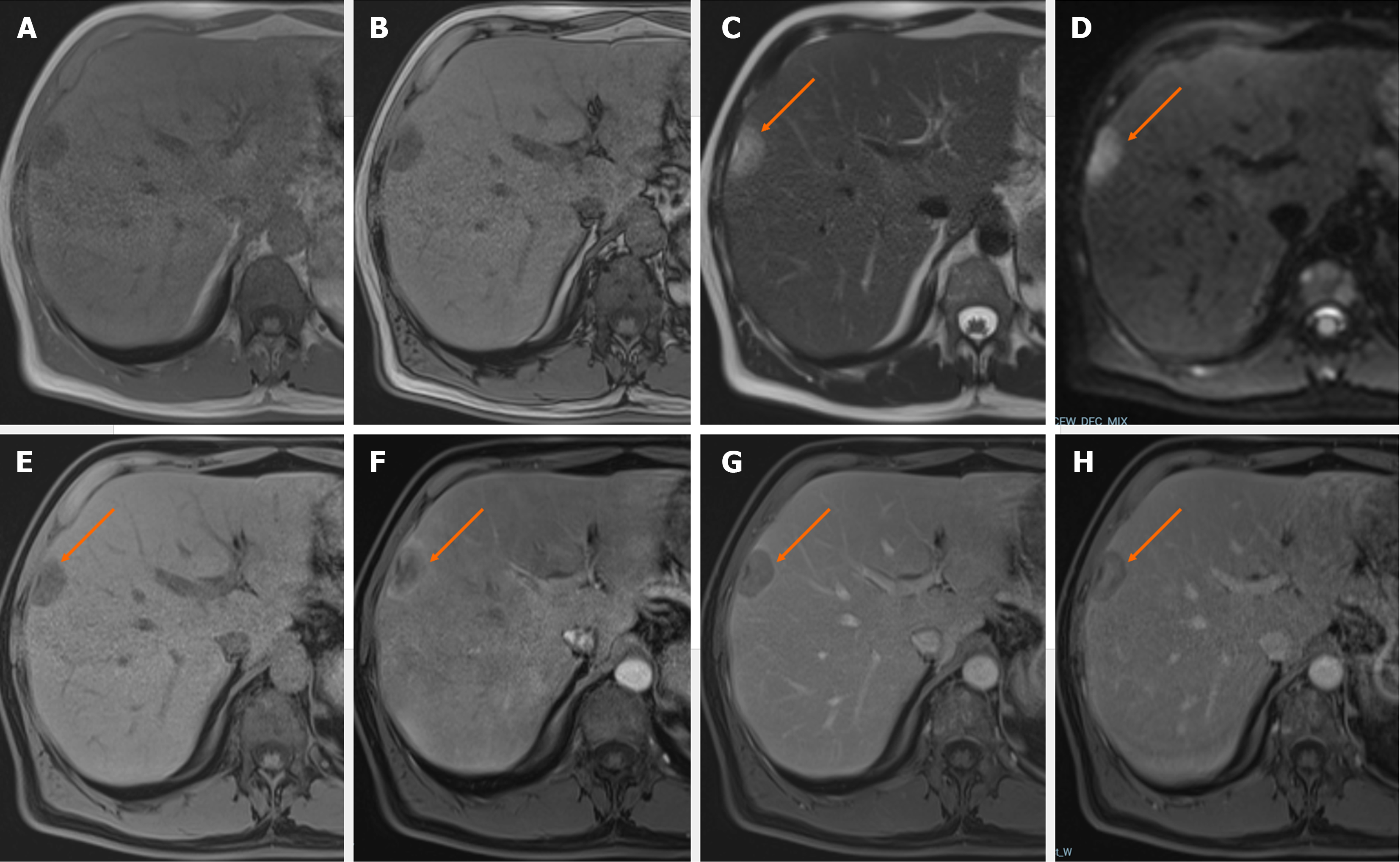Copyright
©The Author(s) 2024.
World J Gastroenterol. Feb 21, 2024; 30(7): 770-773
Published online Feb 21, 2024. doi: 10.3748/wjg.v30.i7.770
Published online Feb 21, 2024. doi: 10.3748/wjg.v30.i7.770
Figure 2 Liver metastases from prostate adenocarcinoma.
In Gd-EOB-magnetic resonance imaging of a 52-year-old male patient. A: On in-phase images, there is a focal hypointense liver lesion; B: On out-of-phase images, the lesion persists hypointense compared to the healthy liver parenchyma; C: On T2-weighted images, the lesion appears slightly hyperintense (orange arrow); D: Diffusion restriction in the lesion on diffusion-weighted imaging (orange arrow); E: Before contrast administration, the lesion is hypointense (orange arrow); F: The lesion appears hypervascular due to peripheral rim-like hyperenhancement during the post-contrast late hepatic arterial phase (orange arrow); G: The lesion is hypointense on the portal-venous phase compared to the healthy liver parenchyma (orange arrow); H: On the hepatobiliary phase, low signal intensity of the lesion due to washout is observed, especially in the peripheral areas (orange arrow).
- Citation: Memis KB, Aydin S. Complementary comments on metastatic liver lesions with exceptional and rare cases. World J Gastroenterol 2024; 30(7): 770-773
- URL: https://www.wjgnet.com/1007-9327/full/v30/i7/770.htm
- DOI: https://dx.doi.org/10.3748/wjg.v30.i7.770









